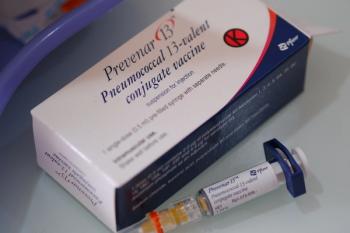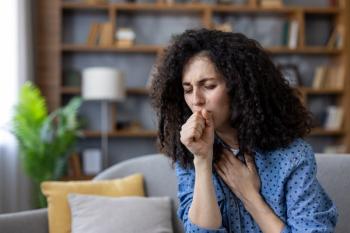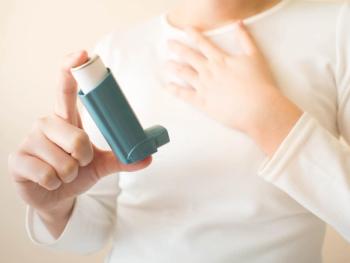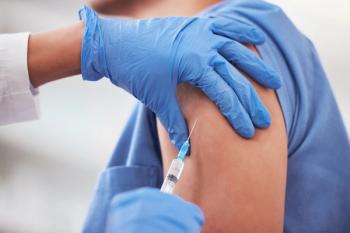
Frequency of Ventilator-associated Pneumonia in COVID-19 With ARDS
Data suggest a high rate of secondary bacterial ventilator-associated pneumonia in patients with COVID-19 and acute respiratory distress syndrome.
The frequency of secondary bacterial ventilator-associated pneumonia (VAP) in patients with COVID-19 and acute respiratory distress syndrome (ARDS) may be linked to SARS-CoV-2 pathophysiology and deviations from aseptic procedures, according to data from a review published in Current Opinions in Infectious Diseases.1
Previous data on patients with COVID-19 and ARDS suggested a high rate of secondary bacterial VAP in this patient population compared with patients who had ARDS from other causes. To address this, a team of investigators conducted a review, assessing the specificity of VAP diagnoses in these patients, including the actual rate of diagnoses in this patient population.
The researchers noted that the “initial antimicrobial overuse has been suggested to increase the risk of VAP in patients who will require [intensive care unit] admission, intubation, and mechanical ventilation.” They found that some studies reported VAP in COVID-19 patients with ARDS in 25% to 85% of patients, which included twice as many complications as in control patients with ARDS who did not have COVID-19. In addition, VAP occurred earlier in COVID-19 patients than in those who were mechanically ventilated for other reasons. Of note, patients with COVID-19 were frequently administered antimicrobial treatment despite the relatively low rate of bacterial coinfection; approximately 3 out of 4 patients were treated with antimicrobials in the community setting in one such study. Another study in the United Kingdom noted that 37% of patients were treated with antimicrobials before their hospital admission and 70.6% of these patients went on to develop secondary infections at least 48 hours following admission. “Importantly, 85.2% received one or more anti-infective treatments at hospital despite the fact that significant bacteriological confirmation and coinfection was obtained in only 10% of cases,” the authors noted in their review.
Aspects of pathophysiology of COVID-19 ARDS may also play a role in the high incidence of VAP in this patient population. For example, the authors noted that altered coagulation and immunothrombosis are physiopathological components of SARS-CoV-2-induced pneumonia that may also contribute to the higher risk for pulmonary infarction in these patients.
Immunomodulator therapies and disease-associated immune impairment may also be potential reasons for an increased risk of developing VAP in this patient population. One such example was the use of dexamethasone, which may increase the occurrence and reoccurrence of VAP; however, the authors noted that a multicenter cohort study did not find a significant difference in the cumulative incidence of VAP in patients treated with dexamethasone in either the first or second wave of COVID-19.
Other studies using antagonists to interleukin (IL)-6 receptors did not find significant increases in VAP risk, and conversely, reports of VAP in IL-6 receptor antagonist cohorts and control cohorts were both low.
The last pathophysiologic reason for the potential increase of VAP in this patient population may be due to the less rigorous standard prevention techniques used in the waves of COVID-19 as compared with standard practice. These included lengthened time of mechanical ventilation duration, use of sedation, and a more frequent need to keep patients in a prone position.
Modifications to diagnostic strategies during the COVID-19 pandemic, such as the generalization of molecular diagnostics may contribute to the increase in the incidence of diagnosed VAP in patients with COVID-19 and ARDS. During this time, multiplex polymerase chain reaction (mPCR) technique was widely used, moreso than the culture-based gold standard, which initially was thought to be advantageous; however, results from previous studies suggest that the accuracy for available panels for some pathogens was low, only a limited number of pathogens were identified, and misdiagnoses were common.
The authors noted one study that “investigated the impact of systemic [bronchoalveolar lavage] using a mPCR panel, and shows a VAP incidence of 44%, after 48 h of invasive ventilation.” In a similar study, mPCR was clinical indicated when there was suspicion of hospital-acquired pneumonia or VAP in patients with COVID-19 and ARDS who were mechanically ventilated. Of the 48 positive episodes, 5 of these had negative cultures and 18 others has positive cultures that were below quantitative thresholds.
The true effects of VAP on the outcome in these patients is still unclear, as no significant correlation has been reported regarding attributable overmortality.
“Consequently, alternative causes should be investigated that might be linked with an impaired prognosis, such as respiratory virus-related nosocomial co-infections,” the authors noted.
“Nonetheless, well conducted studies are needed to evaluate the impact of rapid diagnostic tests in the appropriateness of antimicrobial therapy in order to improve the prognosis of COVID-19 patients with ARDS,” concluded the researchers.
Reference
1. Wicky PH, d'Humières C, Timsit JF. How common is ventilator-associated pneumonia after coronavirus disease 2019? Curr Opin Infect Dis. 2022;35(2):170-175. doi:10.1097/QCO.0000000000000817
Newsletter
Pharmacy practice is always changing. Stay ahead of the curve with the Drug Topics newsletter and get the latest drug information, industry trends, and patient care tips.





























































































































